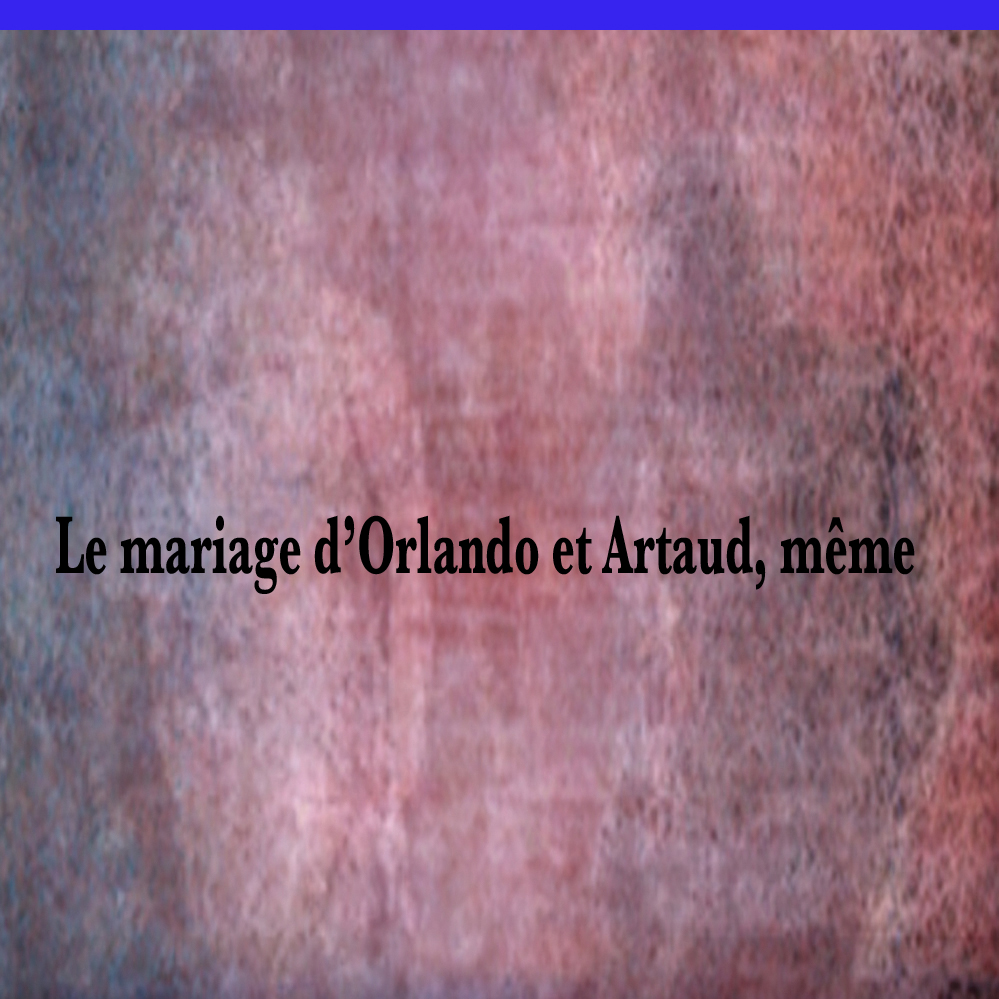
On Friday March 8th, Le mariage d’Orlando et Artaud, même ~ an audio art installation of my The Viral Tempest LP ~ was presented at La Générale Nord-Est: Laboratoire artistique politique et social at 39 Rue Gassendi, 75014 Paris. https://www.lagenerale.fr/fr/projet/le-mariage-dorlando-et-artaud-meme
A recorded interview/discussion between myself and Nicolas Ballet took place March 5th at 7:30 and was internet radio broadcast live here: https://p-node.org/
There was a semi-public presentation on March 8th from 5-9pm.
Le mariage d’Orlando et Artaud, même is an audio art remix installation by transdisciplinary artist Joseph Nechvatal based on his double vinyl record The Viral Tempest which uses sonic material that includes an anonymous reading of Virginia Woolf’s Orlando and Pour finir avec le jugement de dieu, Antonin Artaud’s controversial radio play.
Physical Description: Two speakers are set upon two tripods placed at opposite ends of La Générale’s black box listening gallery. One plays OrlandO et la tempête viral symphOny redux suite and the other Pour finir avec le jugement de dieu viral symphOny plague. The gallery audience may sit or circulate in the center of the space to receive a balanced mix of the two compositions.
Joseph Nechvatal (né à Chicago en 1951) est un artiste post conceptuel vivant à Paris. Il crée des tableaux et des animations à l’aide d’une simulation de vie artificielle de virus modélisés par ordinateur. Les thèmes abordés dans son œuvre incluent l’apocalypse, les excès de la communication, les virus, la fluidité de genre. En 1975, Nechvatal déménage de Chicago pour s’installer à New York (Tribeca). Il entame des études à l’université de Columbia avec le philosophe Arthur Danto tout en travaillant pour la Dia Art Foundation comme archiviste pour le compositeur de musique minimale La Monte Young. En 1980, il quitte Tribeca pour le Lower East Side où il trouve une camaraderie artistique et une énergie créatrice contre-culturelle. Il devient étroitement lié au groupe Collaborative Projects (Colab), collectif influent d’artistes post-punk, incluant notamment Kiki Smith et Jenny Holzer. Ce sont les jours de gloire des célèbres projets du groupe Colab : « Just Another Asshole », « The Real Estate Show », « The Times Square Show »… Il contribue également à mettre en place dans le Lower East Side l’espace culturel à but non lucratif ABC No Rio, où ont lieu des expositions pensées autour de thèmes politiques. Durant cette période, son œuvre se compose de dessins post-minimalistes à la mine de plomb (parfois issus d’agrandissements photographiques), de sculptures, de photographies et de morceaux de musique concrète composés de collages audio. En 1983, il est l’un des co-fondateurs du célèbre projet musical et sonore d’avant-garde, Tellus Audio Cassette Magazine. En 1984, il travaille avec le compositeur no wave Rhys Chatham sur un opéra intituléXS: The Opera Opus. Cet opéra a été présenté entre 1984-1986 à New York et Boston. En 1986, Nechvatal commence à utiliser l’informatique et la robotique pour créer des peintures conceptuelles dont certaines ont été exposées à la Documenta VIII. En 1992, il devient artiste en résidence à l’atelier Louis Pasteur et à la Saline Royale d’Arc-et-Senans où il développe des programmes de virus informatiques qu’il utilise comme outil artistique. Ce travail traduit ses réflexions sur l’épidémie du SIDA. En 1995, encouragé vivement par Pierre Restany, il s’installe à Paris. Il partage alors sa vie entre Paris et New York. En 1999, il obtient en Angleterre son doctorat en philosophie. Il écrit deux ouvrages sur la théorie de l’art : Towards an Immersive Intelligence et Immersion Into Noise. Depuis 2001, il étend ses expérimentations sur le virus en tant qu’instrument artistique et pictural dans une série de travaux sur la vie artificielle. Ces œuvres comprennent plusieurs séries de peintures, des animations, et une composition audio : « viral symphOny ». Il continue actuellement d’explorer la fragilité et la fluidité du corps humain. [ www.nechvatal.net ]
Nicolas Ballet est docteur en histoire de l’art et attaché de conservation au Centre Pompidou. Il consacre ses recherches aux cultures visuelles alternatives, à l’art expérimental, aux sound studies et aux avant-gardes artistiques. Il enseigne l’histoire de l’art contemporain à l’université Paris 1 Panthéon-Sorbonne et a écrit de nombreux textes explorant les apports visuels et sonores des contre-cultures et des pratiques artistiques expérimentales. Il est l’auteur de deux livres sur Genesis P-Orridge et a notamment publié dans Les Cahiers du Musée national d’art moderne, Octopus Notes, Marges, Optical Sound, Volume !, Revue & Corrigée, Klima, dans lesCahiers du CAP et Histo.art aux Éditions de la Sorbonne, ainsi que dans des ouvrages consacrés aux œuvres de Nigel Ayers et de Zoe Dewitt. En 2023, il a été le commissaire de l’exposition «Who You Staring At? Culture visuelle de la scène no wave des années 1970 et 1980 » au Centre Pompidou. [ www.nicolasballet.com ]
